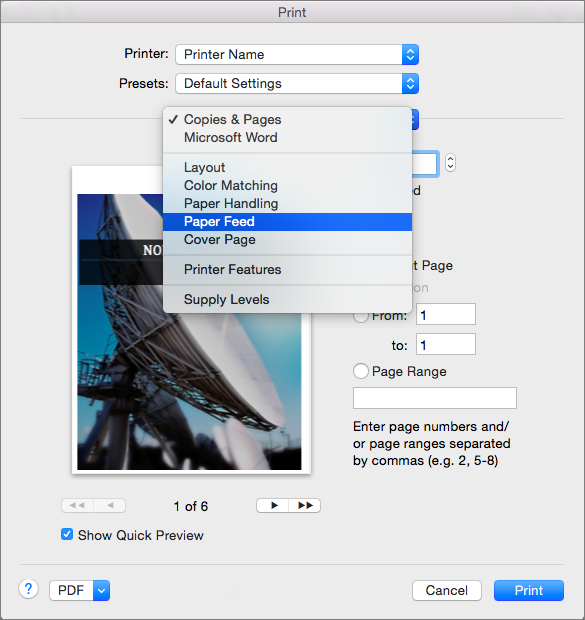

For instance, you might want to print part of or an entire page in landscape in the middle of a document that's using portrait orientation. A section lets you control formatting as needs change. Section breaks can be more troublesome than page breaks, because many users don't understand the nature of sections.
#Setting prefernces for section breaks in mac word 2011 manual#
These options are almost always preferable to a manual break. Page Break Before: This little-used option forces Word to begin the current paragraph at the beginning of a new page.Keep Lines Together: This is the simplest option to understand it keeps all the lines of the current paragraph together on the same page.(This option is part of the built-in heading styles.) You'll use this option to keep introductory text and headings with the text that immediately follows. If Word has to move both paragraphs to the next page to do so, it will. Keep With Next: This option glues the current paragraph to the following paragraph.The remaining options, which you'll apply as needed, follow: This option prevents a single line from appearing at the top or bottom of a page. Word enables the Widow/Orphan Control by default. To access these options, click the Paragraph group's dialog launcher and then click the Line And Page Breaks tab. Consequently, you could end up with an unexpected page break that's all but impossible to get rid of, unless you know its cause. That happens when you want a break to occur before or after a specific paragraph of text. Sometimes the break really belongs to the text. Manual page breaks might be easy to insert, but they're seldom the best way to break. Manual breaks are probably the easiest break problem to find and resolve. Or, click the Show/Hide option in the Paragraph group on the Home tab to display the page break element, highlight it, and press Delete. Position the cursor at the beginning of the next page and press. As you add and delete elements, you might find manual page breaks no longer appropriate. (Page Break is on the Insert menu in Word 2003.) Unfortunately, manual page breaks (also known as hard page breaks) cause trouble because they don't flow with the document's structure. Or, click the Page Break option in the Pages group on the Insert tab.

You can create a new page at any time by pressing +. Users don't always realize that they're the problem - they inserted the breaks, whether intentionally or not. Documents end up with unwanted breaks that play havoc with page numbering, formats, and printing. Other than styles, page and section breaks probably cause the most confusion and trouble for the untrained user.


 0 kommentar(er)
0 kommentar(er)
